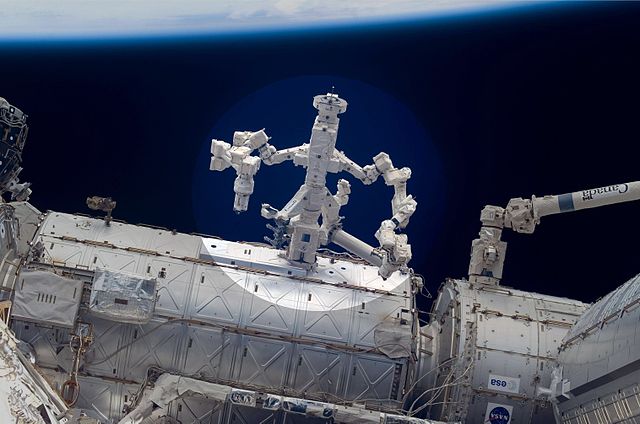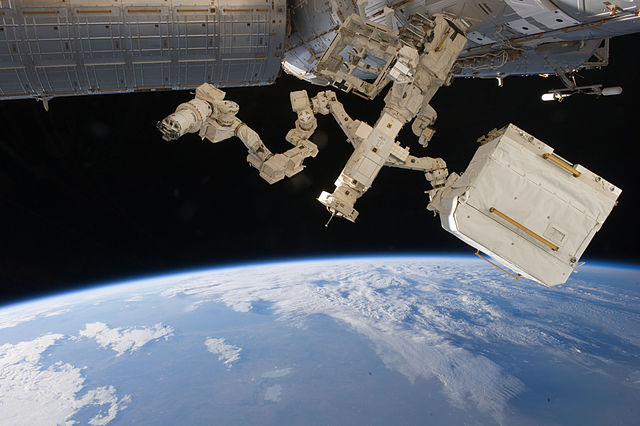Orbital replacement units (ORUs) are key elements of the International Space Station that can be readily replaced when the unit either passes its design life or fails. ORUs are parts of the main systems and subsystems of the external elements of the ISS, none are intended to be installed inside the pressurised modules. Examples of ORUs are: pumps, storage tanks, controller boxes, antennas, and battery units. Such units are replaced either by astronauts during EVA or by the Dextre (SPDM) robotic arm. All are stored on the three external stowage platforms (ESPs) or the four ExPRESS Logistics Carriers (ELCs) mounted on the Integrated Truss Structure (ITS).
ESP-2 platform mounted to the Quest module (pallet deployed)
ELC-3 in the grasp of Endeavour's robotic arm STS-134 (pallet deployed)
ICC in the forward end of the payload bay STS-102 (retained in the payload bay throughout the flight)
ICC-Lite payload structure STS-122 (retained in the payload bay throughout the flight)
Dextre, also known as the Special Purpose Dexterous Manipulator (SPDM), is a two-armed robot, or telemanipulator, which is part of the Mobile Servicing System on the International Space Station (ISS), and does repairs that would otherwise require astronauts to do spacewalks. It was launched on March 11, 2008, on the mission STS-123.
Dextre, many of the ISS's Robotic arms and experiments, can be operated from Earth, performing tasks while the crew sleeps.
Dextre on the end of Canadarm2
Dextre, as photographed by an Expedition 26 crew member
Dextre, as photographed by an Expedition 27 crew member








